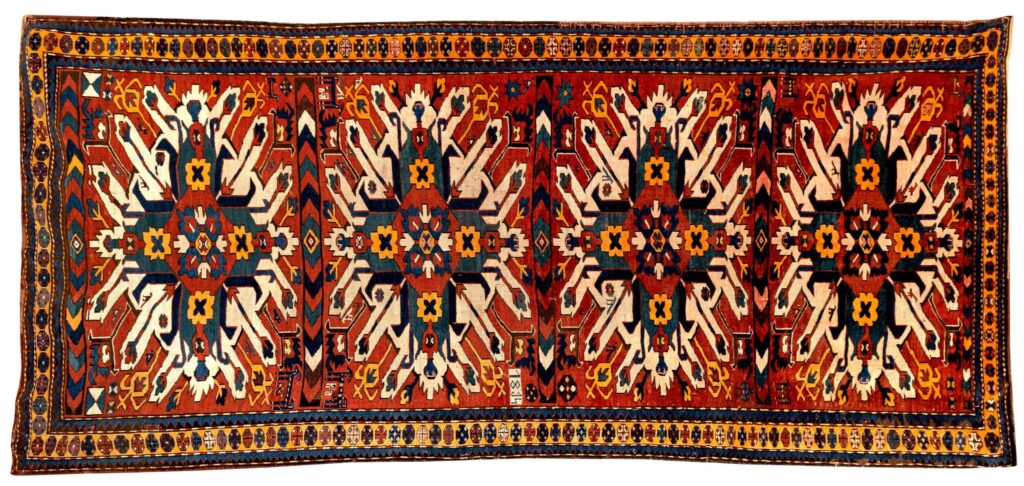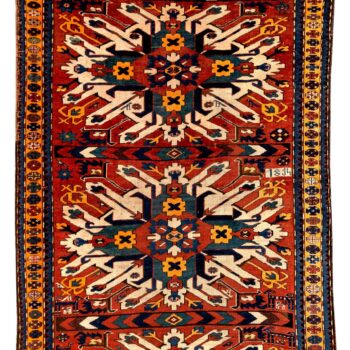Chelaberd – Eagle Kazak
This famous design called Chelaberd is generally known in the antique rug market as “Eagle Kazak” or “Sunburst Kazak”. Although the carpet market uses the term Kazak, this radiantly designed carpet was not woven in the Kazak region, but in Karabagh, located south of Kazak. The base of the rug is made of wool or sometimes a mixture of wool and goat hair. The fur is made from lustrous sheep’s wool that is silky to the touch.
Most 19th century Chelaberds have two or three medallions and some have two and a half medallions, while “Single Eagles”, with just one medallion, are more difficult to find. They were probably originally used to represent sunbeams. Eagle Kazak rugs often have small animals including birds and human figures woven into the main field in contrast to the grandeur of their main cosmic design. Scholars believe that this contrast represents the macrocosm and microcosm, that life on the planet is part of the universal order. Caucasian carpet edges known as “crab” are common in Eagle Kazak and other Karabagh carpets.
Most of the “Eagles Kazak” carpets available on the carpet market today are very inferior pieces, produced in the workshops that Stalin set up in the 1920s for export. On the other hand, the finest “Eagle Kazak” rugs made in the 19th century are wonderful works of art, produced with intentional inconsistencies, spontaneity and the use of radiant colors, including magnificent shades of green and teal. Most pieces of artistic caliber were woven at the turn of the 20th century or the end of the 19th century, while examples from the 1870s and the first half of the 19th century are rarely available. These early Chelaberds are highly prized when they are in good condition.


Figalli Oriental Rugs
We do not sell rugs. We bring rare works of art to your home in the form of rugs.
Our services
You are Protected
Copyright © 2023 Figalli Oriental Rugs, All rights reserved. Desenvolvido por Agência DLB – Agência de Marketing Digital em Porto Alegre


